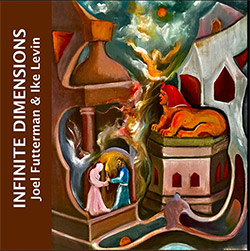
Two spontaneously composed original improvisation from the collaborative partnership of Ike Levin on tenor saxophone and Joel Futterman on piano & Indian flute, their long history together allowing great depth of connection, passionate expression and periods of reflective contemplation, weaving their playing with meticulous detail inside an impressive and masterful journey.
Out of Stock
Quantity in Basket: None
Log In to use our Wish List
Shipping Weight: 3.00 units
Sample The Album:
Joel Futterman-piano, Indian flute
Ike Levin-tenor saxophone
Click an artist name above to see in-stock items for that artist.
UPC: 806102127696
Label: CLM
Catalog ID: 1003
Squidco Product Code: 34796
Format: CD
Condition: New
Released: 2024
Country: USA
Packaging: Cardboard Gatefold
Recorded in Virginia Beach, Virginia, on June 4th, 2023, by Benjamin Tomassetti.
"Charles Lester Music and JDF Music proudly announces the release of Infinite Dimensions a new recording by internationally acclaimed pianist Joel Futterman and his long-time collaborator saxophonist Ike Levin. This release marks the 15th recording by this duo together. Infinite Dimensions presents two spontaneously composed original pieces created y by the Duo that take the listener on a spirited emotional journey characterized by spiraling heights of intense passion and expressive catharsis to meditative depths of reflective introspection. In both pieces Futterman and Levin interweave their musical narratives playing off each other with pronounced precision. Individual freedom of expression is weaved together with highly synchronous connection. Musical ideas and phrases are constructed, deconstructed, and reconstructed in tandem with steadfast fearlessness and notable comfort propelling the music forward in unpredictable pathways. Futterman once again showcases his unique skill in weaving rich harmonies with complex linear phrasing while laying a foundation of complex bass lines at exhilarating velocity. Levin shifts effortlessly among lyrical chromatism, atonal phrasing, and expressive harmonics. This is a tight musical unit who demonstrate a near telepathic connection as develop each composition once again tight-roping between the "inside" and "outside." This recording represents another valuable contribution to the directions of creative music today.
"Musical relationships thrive on distillation. Joel Futterman and Ike Levin have been recording together since 2000, evident in every symbiotic interaction of this latest encounter. It all begins with a half-step, that most minuscule of intervals, but, as novelist Nancy Huston observes when describing Baroque music, decreasing distance brings perceptive flux. The two-note phrase reveals its secrets gradually, emerging serially and as a model for much of the sonic maelstrom comprising the first of these two epic explorations. All evolves with organic precision and commensurate vigor, Futterman and Levin plumbing requisite depths exposed as point and line swing in and out of contrapuntal focus.
The miracle resides in what that half-step becomes, the micro and macroscopic layers it creates and uncovers. Like ocean salt, it flavors and defines by turn, guiding Futterman's extraordinarily sensitive bass work and Levin's 0:19 entrance. Growing to imbue each harmonic complex and arpeggiated utterance with chromatic luminosity, it then propels the music's development, colliding centers in architectonic revelation even as they circle and evaporate. At 2:48, a sonority vanguards itself, the first of many punctuating and delineating the sentences Futterman and Levin interweave to form their vast narratives in flux. Under Levin's fingers, the half-step becomes ornamental (3:32) or germinates into the deep blues immediately following as Futterman thunders mountainous structures below. It domes the peaks of Levin's spiked reiterations (4:48) and the curved lines of Futterman's succeeding solo, not to mention infusing any Monk allusions that might recur.
More than this, that smallest of distances defines the music's evolution, its continuous juxtapositions, mood shifts and tempo changes. That early moment of repose in the first piece prefigures the cataclysmic reconfiguration at 20:23 and the exquisite dyad at 20:40, another half-step elongated beyond proportion, a timeless moment. The episode anticipates the second piece's meditative spaces, vistas of piano and flute then transfigured by Levin's atomistic phrases (2:18) and rippling melodic interjections (11:38.) The denser passages dominating the first piece are present but parenthetical, territory revisited and now viewed in broader contexts. Here, the duo thrives on more readily apparent introspection, each sonority a space, each space a sound and each sound a gateway.
The music's mystery, its glow and slow burn, resides in these resonating and morphing passages. Taken as a whole, the two pieces illuminate the path blazed on Interview (Futterman and Levin's first collaboration) and followed throughout the subsequent two decades, a constant momentum toward the conjoining of gesture and intention. What emerges on reaudition is a staggering sense of size in obliteration. There is a linear element, as the atoms in conjunction that defined the first piece find their counterparts in the second piece's astonishing phrases in rapid-fire juxtaposition, but each moment's implications reach experiential depths far beyond cause and effect. The prevalent half-step encapsulates the music's constant macrocosmic motion from cloudburst to ballad and back. Every moment captured in time's elasticity elucidates a formal unity and the circuitous paths Futterman and Levin have followed to achieve it. Pitch, register, dynamics and articulation all prove subservient to their shared vision's guiding principle. With the cosmic irony only spontaneous creativity manifests, the infinity of dimensions in conjunction is both present and only tantalizingly implied. Time, timelessness and all attendant concerns pale against the spaces in which transitions negate all such constructs, the place where music's aching ephemerality is born."-Marc Medwin
Artist Biographies
• Show Bio for Joel Futterman "Joel Futterman, Piano and Indian Flute Determined to push the limits of the piano to techniques never heard in jazz, Joel began a 25-year regimen of practicing 8-10 hours a day. During this period, he developed a three-hand technique based on completely autonomous playing between the hands. With more than 70 recordings, he is considered one of the most innovative yet enigmatic new music pianists. Known for his spirited, highly imaginative, and innovative piano technique, Joel Futterman is an internationally recognized veteran pioneer into the frontiers of spontaneous, improvised music. He is considered one of the foremost inventive and adventurous artists shaping the creative, progressive music scene today. Futterman continuously pushes the limits of the piano as he explores new musical horizons. He has performed across North America and Europe including at such noted music festivals as the Tampere Jazz Festival in Finland, the Vision Festival in New York, the New Orleans Jazz & Heritage Festival, and the Guelph Festival in Canada. He has performed with such notable jazz innovators as Jimmy Lyons, Rahsaan Roland Kirk, Paul Murphy, Joseph Jarman, Richard Davis, William Parker, Alvin Fielder, and Hal Russell; as well as Edward 'Kidd' Jordan, with whom he has had a highly productive association. For many years, Futterman has also played the Indian Wooden Flute. Joel Futterman was born in Chicago, IL. He grew up and lived in Chicago until 1972. Joel had piano lessons from about age 9-11, then continued playing on his own, eventually studying theory and harmony with Alan Swain. Joel met Clarence (Gene) Shaw when he was 18 and studied with Clarence for two years. Clarence was an important influence at the time. One night Clarence invited Joel to his home for a party. He introduced Joel to Charles Mingus. Joel recalls that Mingus gripped his hand firmly and stared up at the ceiling. Joel attended University of Illinois in Chicago obtaining a (B.S.). Herman Finer, professor of political science, was a profound influence and encouraged Joel to pursue his creative endeavors. While Joel was in college, his mother passed away and he isolated himself and began practicing 12 to 16 hours a day. Practicing was the only comfort for him at this time. Joel attended Northeastern University in Chicago and worked on an MS in Education. He was nine hours short of receiving the degree when he decided to leave Chicago. Joel did receive an MS in Education with an endorsement in Reading at Old Dominion University in 1975. In 1972, Joel moved to Virginia, where he resides today, in a personal quest to develop his creative voice. His first album, CAFETERIA, was released in 1980 to considerable acclaim due to its originality. Since then, his recordings have included a number of jazz legends, such as Jimmy Lyons, Richard Davis, Hal Russell, William Parker and others. In 1994, photographer Michael Wilderman introduced Joel to Edward 'Kidd' Jordan, and since then Joel has enjoyed many rewarding musical collaborations with Kidd and drummer Alvin Fielder. Also, Joel Futterman has had a deep association with artist Ike Levin, founder of the Charles Lester Label." ^ Hide Bio for Joel Futterman • Show Bio for Ike Levin "Ike Levin has been playing reed instruments professionally for over 28 years. A native of Chicago, Illinois, Ike was an active performer in the windy city's vibrant jazz, blues, and new music scene before relocating to the San Francisco Bay area. He studied music composition at the Roosevelt University Conservatory of Music and in the Jazz Studies program at the University of Illinois at Chicago. While a student, Ike performed as a regular member of the University of Illinois Jazz Orchestra and played with the Jazz Members Big Band comprised of many of the Chicago area's top jazz musicians who used the Band as a forum for original arrangements and experimental compositions. Ike studied privately with legendary jazz saxophone master Joe Daley who helped him develop his technique and establish his neo-bop foundations. Ike also studied with Fred Anderson, one of the co-founders of the Chicago based avant-garde jazz organization Association for the Advancement of Creative Music (AACM). Under the tutelage of Fred Anderson Ike began to explore new musical frontiers for his improvisational work unencumbered by harmonic structures and strict time meter. As he tells it, "At first, I thought Fred was going to get me into abstract concepts of the music, but initially we used to play Charlie Parker heads over and over again together. He was getting me into Bird's amazing concept of phrasing which is the foundation of all improvisational work." However, his real development as a jazz musician came from listening and occasionally sitting in with the many great jazz artists who came through Chicago's jazz clubs during the 70's and early 80's. Whether its "straight ahead" or freer forms of jazz, Ike is never content to rely on clichés or simply replicate past musical phrases. Instead, he is always searching for new musical ideas and sounds all the while focusing on keeping the music swinging. Ike's orientation to his instruments and approach to jazz improvisation has had a multitude of influences. Some of his major influences include the saxophonists John Coltrane, Eric Dolphy, Jimmy Lyons, Sonny Rollins, and Dexter Gordon, as well as Albert Ayler. The music of Thelonious Monk and Charles Mingus have also influenced his approach and concept of improvisation. Additionally, Ike identifies such 20th century composers as Bartok, Perdercki, and Boulez as influencing the way he conceives of musical composition and tonality. In addition to Chicago and San Francisco, Ike has performed in cities across the US and Canada including Portland, Cleveland, St. Louis, Minneapolis, Phoenix, and Toronto. For the past 7 years, Ike has had a very productive association with pianist Joel Futterman with whom he performs and records regularly. He has also performed with such internationally acclaimed musicians as Ira Sullivan, Robert Barry, Wilbur Campbell, Reggie Nicholson, Alvin Fielder, Ed Petersen, and Bay Area jazz stalwarts Oluyemi Thomas, Randall Hunt, Smiley Winters, Walter Savage, and Kash Killion. Ike has also led his own quartets and small ensembles comprised of veteran jazz talents." ^ Hide Bio for Ike Levin
7/9/2025
Have a better biography or biography source? Please Contact Us so that we can update this biography.
7/9/2025
Have a better biography or biography source? Please Contact Us so that we can update this biography.
Track Listing:
1. Part One 36:36
2. Part Two 21:23
Improvised Music
Jazz
Free Improvisation
Duo Recordings
Recordings by or featuring Reed & Wind Players
Piano & Keyboards
Staff Picks & Recommended Items
Search for other titles on the label:
CLM.



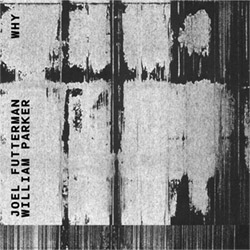
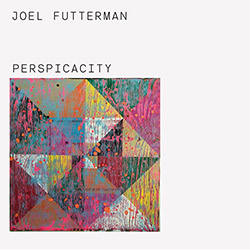
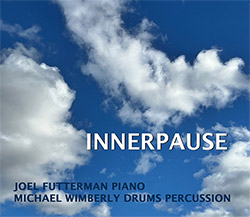
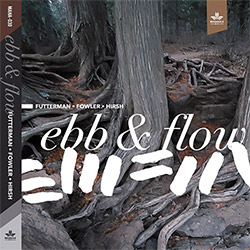


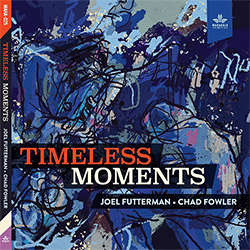
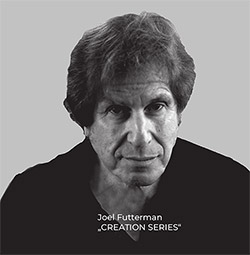



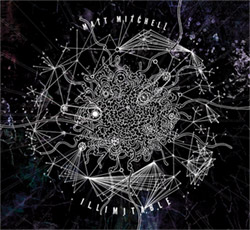
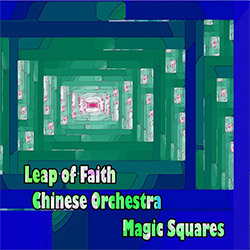
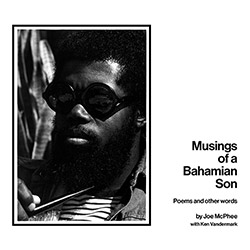
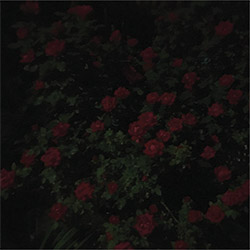
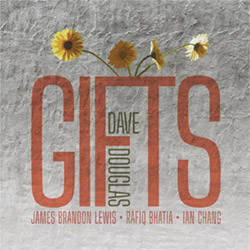




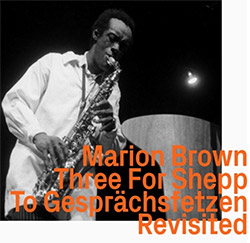
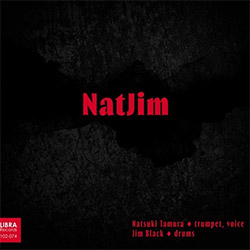
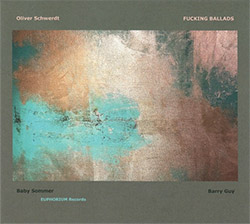
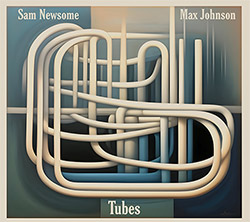






![BlueRing Improvisers: Materia [2 CDs]](https://www.teuthida.com/productImages/misc4/36513.jpg)




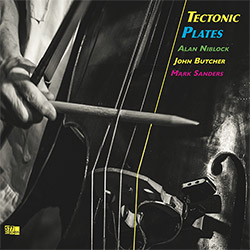



![Wheelhouse (Rempis / Adasiewicz / McBride): House And Home [VINYL]](https://www.teuthida.com/productImages/misc4/36462.jpg)
![+DOG+: The Light Of Our Lives [2 CDs]](https://www.teuthida.com/productImages/misc4/36009.jpg)


![Parker, Evan / Jean-Marc Foussat: Insolence [VINYL]](https://www.teuthida.com/productImages/misc4/36398.jpg)










![Deupree, Jerome / Sylvie Courvoisier / Lester St. Louis / Joe Morris: Canyon [2 CDs]](https://www.teuthida.com/productImages/misc4/36404.jpg)



![Eventless Plot | Haarvol: The Subliminal Paths [CASSETTE + DOWNLOAD]](https://www.teuthida.com/productImages/misc4/36232.jpg)










![Eventless Plot | Francesco Covarino: Methexis [CASSETTE + DOWNLOAD]](https://www.teuthida.com/productImages/misc4/36231.jpg)



![Das B (Mazen Kerbaj / Mike Majkowski / Magda Mayas / Tony Buck): Love [VINYL]](https://www.teuthida.com/productImages/misc4/36329.jpg)


![Eternities: Rides Again [CASSETTE]](https://www.teuthida.com/productImages/misc4/36247.jpg)
![Lopez, Francisco: Untitled (2021-2022) [2 CDs]](https://www.teuthida.com/productImages/misc4/36438.jpg)






![Money : Money 2 [2 CDs]](https://www.teuthida.com/productImages/misc4/35894.jpg)




![Klinga, Erik: Elusive Shimmer [VINYL]](https://www.teuthida.com/productImages/misc4/36258.jpg)
![CHANGES TO blind (Phil Zampino): Volume 9 - I Wave on a Fine Vile Mist [CD + DOWNLOAD]](https://www.teuthida.com/productImages/misc4/36061.jpg)

![Wallmart / Rubbish: Asset Protection [split CD]](https://www.teuthida.com/productImages/misc4/35900.jpg)


![+Dog+: The Family Music Book Vol. 5 [2 CDs]](https://www.teuthida.com/productImages/misc4/35897.jpg)
![Kuvveti, Deli : Kuslar Soyledi [CASSETTE w/ DOWNLOAD]](https://www.teuthida.com/productImages/misc4/36107.jpg)

![Brown, Dan / Dan Reynolds: Live At The Grange Hall [unauthorized][CASSETTE]](https://www.teuthida.com/productImages/misc4/36245.jpg)








![Palestine, Charlemagne / Seppe Gebruers: Beyondddddd The Notessssss [VINYL]](https://www.teuthida.com/productImages/misc4/36206.jpg)
![Palestine, Charlemagne / Seppe Gebruers: Beyondddddd The Notessssss [NEON GREEN VINYL]](https://www.teuthida.com/productImages/misc4/36207.jpg)

![Laubrock, Ingrid: Purposing The Air [2 CDs]](https://www.teuthida.com/productImages/misc4/35639.jpg)

![Yoko, Ono / The Great Learning Orchestra: Selected Recordings From Grapefruit [2 CDs]](https://www.teuthida.com/productImages/misc4/35841.jpg)









![Zorn, John / JACK Quartet: The Complete String Quartets [2 CDs]](https://www.teuthida.com/productImages/misc4/35609.jpg)

![Lonsdale, Eden: Dawnings [2 CDs]](https://www.teuthida.com/productImages/misc4/35480.jpg)



![Sorry For Laughing (G. Whitlow / M. Bates / Dave-Id / E. Ka-Spel): Rain Flowers [2 CDS]](https://www.teuthida.com/productImages/misc4/35985.jpg)

![Rolando, Tommaso / Andy Moor : Biscotti [CASSETTE w/ DOWNLOADS]](https://www.teuthida.com/productImages/misc4/36106.jpg)


![Electric Bird Noise / Derek Roddy: 8-10-22 [CD EP]](https://www.teuthida.com/productImages/misc4/35970.jpg)








![Elephant9 : Mythical River [VINYL]](https://www.teuthida.com/productImages/misc4/34624.jpg)



![Elephant9 with Terje Rypdal: Catching Fire [VINYL 2 LPs]](https://www.teuthida.com/productImages/misc4/35355.jpg)
![Deerlady (Obomsawin, Mali / Magdalena Abrego): Greatest Hits [VINYL]](https://www.teuthida.com/productImages/misc4/34876.jpg)







![Surplus 1980: Illusion of Consistency [CD]](https://www.teuthida.com/productImages/misc4/35069.jpg)
![Staiano, Moe: Away Towards the Light [VINYL + DOWNLOAD]](https://www.teuthida.com/productImages/misc4/35037.jpg)
![Coley, Byron: Dating Tips for Touring Bands [VINYL]](https://www.teuthida.com/productImages/misc4/17906.jpg)

![Lost Kisses: My Life is Sad & Funny [DVD]](https://www.teuthida.com/productImages/misc4/lostKissesDVD.jpg)